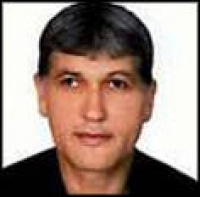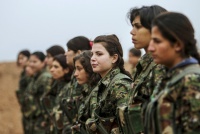Syria: years after the disappearance of Rami Al Jadi and Anas Abdallah, their fate is still unknown
In April 2016, Alkarama documented two more cases of enforced disappearance that took place in Syria in 2012 and 2013. The first case is that of Rami Al Jadi, a 25-year-old worker, who on 23 July 2012, was with two of his friends in a Damascus neighbourhood, when they were arrested by officers of the Syrian Army, who did not give any reason for the arrest. The families never received any official information on their fate and whereabouts. However, a former co-detainee reported that Al Jadi was detained in Sednaya prison, a prison under the control of the Military, where torture is routinely practiced, resulting in a high number of deaths, as documented by a recent report of the Independent International Commission of Inquiry on the Syrian Arab Republic (CoI). Nevertheless, when they reached out to Sednaya’s prison authorities, Al Jadi’s relatives had to face their refusal to provide any information.
Syria: Alkarama raises 3 cases of disappearances in Damascus and Aleppo with the UN

 In April 2016, Alkarama wrote to the United Nations Working Group on Enforced Disappearances (WGEID) regarding the cases of three Syrian citizens, Qassab Jamal, Mohammad Saleem al Sharqa – who had already been arrested in 2012 for their participation in peaceful demonstrations – and Nassir Al Nuaimi. All three Syrian citizens disappeared after their arrest by the security services between 2012 and 2014. Alkarama hopes that the WGEID will be able to help disclose their whereabouts.
In April 2016, Alkarama wrote to the United Nations Working Group on Enforced Disappearances (WGEID) regarding the cases of three Syrian citizens, Qassab Jamal, Mohammad Saleem al Sharqa – who had already been arrested in 2012 for their participation in peaceful demonstrations – and Nassir Al Nuaimi. All three Syrian citizens disappeared after their arrest by the security services between 2012 and 2014. Alkarama hopes that the WGEID will be able to help disclose their whereabouts.
Syria: Universal Periodic Review 2016 - Alkarama's Submission to State's UPR
Syria: Alkarama’s report denounces gross violations of humanitarian law and human rights
 On 24 March 2016, Alkarama submitted its report on Syria's human rights record to the Human Rights Council (HRC) in view of the country's second Universal Periodic Review (UPR) – an interactive discussion between the State under review and other UN Member States on its human rights record –, which will take place next October 2016. Since Syria’s last UPR in 2011, the country plunged into a ravaging civil war, that resulted in violations of the most fundamental principles of humanity enshrined in International Humanitarian Law and Human Rights Law. Alkarama’s report raised the following key issues.
On 24 March 2016, Alkarama submitted its report on Syria's human rights record to the Human Rights Council (HRC) in view of the country's second Universal Periodic Review (UPR) – an interactive discussion between the State under review and other UN Member States on its human rights record –, which will take place next October 2016. Since Syria’s last UPR in 2011, the country plunged into a ravaging civil war, that resulted in violations of the most fundamental principles of humanity enshrined in International Humanitarian Law and Human Rights Law. Alkarama’s report raised the following key issues.
Syria: Shamel Najjar and his brother Tamer disappeared since their arrest during an army raid in 2012
 During an arrest raid that took place on 14 May 2012, Syrian army officers abducted 29-year-old Shamel Najjar and his brother, 31-year old carpenter Tamer, taking both to an unknown location and later refusing to recognise their arrest and detention. Concerned over their fates, Alkarama and Human Rights Guardians sent their case to the United Nations Working Group on Enforced or Involuntary Disappearances (WGEID), in the hope that it will help shed light on their whereabouts.
During an arrest raid that took place on 14 May 2012, Syrian army officers abducted 29-year-old Shamel Najjar and his brother, 31-year old carpenter Tamer, taking both to an unknown location and later refusing to recognise their arrest and detention. Concerned over their fates, Alkarama and Human Rights Guardians sent their case to the United Nations Working Group on Enforced or Involuntary Disappearances (WGEID), in the hope that it will help shed light on their whereabouts.
Syria: 4 more cases of men disappeared following their arrest at checkpoints
Over the last weeks, Alkarama received the testimonies of relatives of four men who disappeared following their arrests at various checkpoints in Syria between July 2012 and May 2015. All the arrests were conducted by members of the Security Services or the Military, who did not present a warrant nor inform the victims of the reasons of their arrest. The four men remain disappeared since. Consequently, on 2 March 2016, Alkarama sent their cases to the United Nations Working Group on Enforced or Involuntary Disappearances (WGEID), in the hope that this can help shed light on their fates and whereabouts.
Syria: Student Disappears after Prison Transfer by the Kurdish People's Protection Units (YPG)
In March 2015, Ammar Al Hasan, a 20-year-old student detained in Al Malikiyah prison – one of the central Kurdish prisons in north-eastern Syria – was transferred to an unknown detention centre and subsequently disappeared. The Kurdish authorities have refused to provide any information about his whereabouts, and his family was never informed of the location he was brought to. His relatives therefore turned to Alkarama and Human Rights Guardians, who referred Al Hasan's case to the Independent International Commission of Inquiry on the Syrian Arab Republic (CoI Syria) on 23 December 2015.
Syria: Palestinian Writer Ali Al Shihabi Missing for Three Years
On 17 December 2012, Ali Al Shihabi, a Palestinian writer and former worker at the United Nations Relief and Work Agency for Palestine refugees in the Near East, was arrested by the Military Intelligence near the Al Yarmouk refugee Camp where he lived, most probably for his links with Syria's Communist Labor Party as well as his political writings. Fearing that he may be tortured in secret detention, on 15 March 2013, Alkarama sent an urgent appeal to the United Nations Working Group for Enforced and Involuntary disappearances (WGEID), in the hope that this UN Special Procedure could help shed light on Al Shihabi's whereabouts. Three years on, however, the Syrian authorities have failed to provide answers clarifying his fate. On 17 December 2015, exactly three years after his disappearance, members of Syria's civil society launched a campaign to release him or at least clarify his fate. Alkarama wholeheartedly joins this campaign, again calling for his release.
Syria: Car Painter Missing Since Arrest at Military Checkpoint in 2011
In April 2011, car painter Jassim Al Shehab disappeared after his arrest by members of the Military Intelligence Division at a checkpoint in the Homs Governorate. Since then, his family has not been able to obtain any official information on his whereabouts. Given these facts, Alkarama and Human Rights Guardians wrote to the United Nations Working Group on Enforced Disappearances (WGEID) on 1 December 2015, hoping that it will help shed light on his fate.
Syria: 15-year-old Girl Abducted and Forcibly Recruited by the Kurdish People's Protection Units in December 2014 Still Missing
In late December 2014, Hamrein Hussein, a 15-year-old Syrian Kurdish student from Amuda, was abducted on her way to school by a patrol of the People's Protection Units (YPG) – Syrian Kurdistan's armed forces – and forcibly enrolled. Seized of her case by her family, Alkarama and Human Rights Guardians referred it to the Independent International Commission of Inquiry on the Syrian Arab Republic (CoI Syria) on 2 December 2015.
 Algeria
Algeria Bahrain
Bahrain Djibouti
Djibouti Egypt
Egypt Iraq
Iraq Palestine/Israel
Palestine/Israel Jordan
Jordan Kuwait
Kuwait Lebanon
Lebanon Libya
Libya Mauritania
Mauritania Morocco
Morocco Oman
Oman Qatar
Qatar Saudi Arabia
Saudi Arabia Sudan
Sudan Syria
Syria Tunisia
Tunisia United Arab Emirates
United Arab Emirates Yemen
Yemen Other Countries
Other Countries




